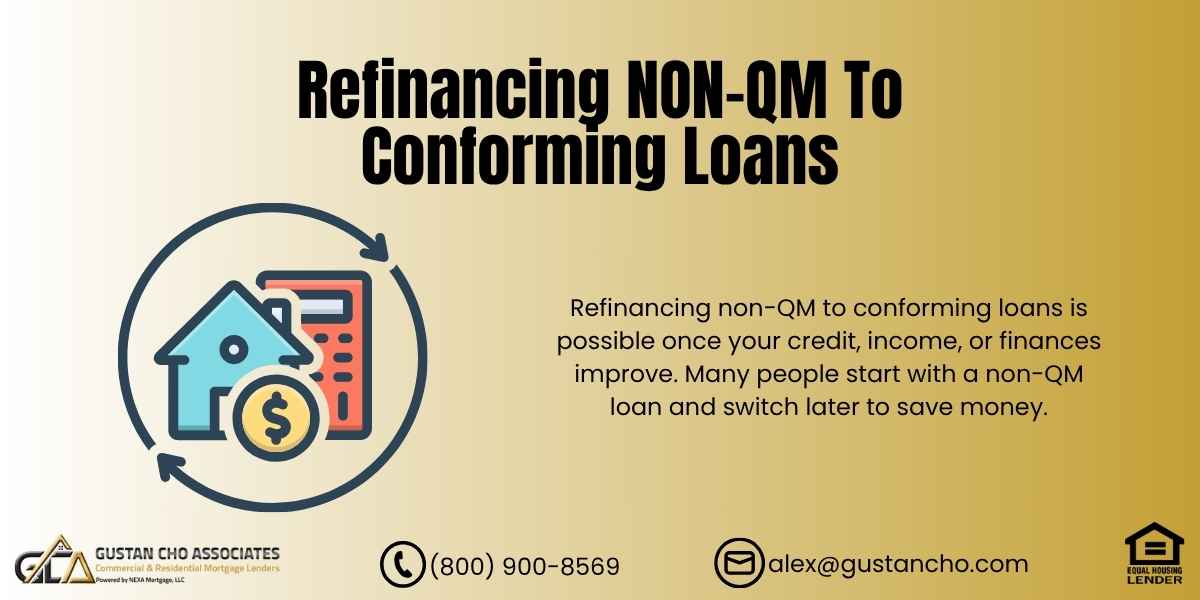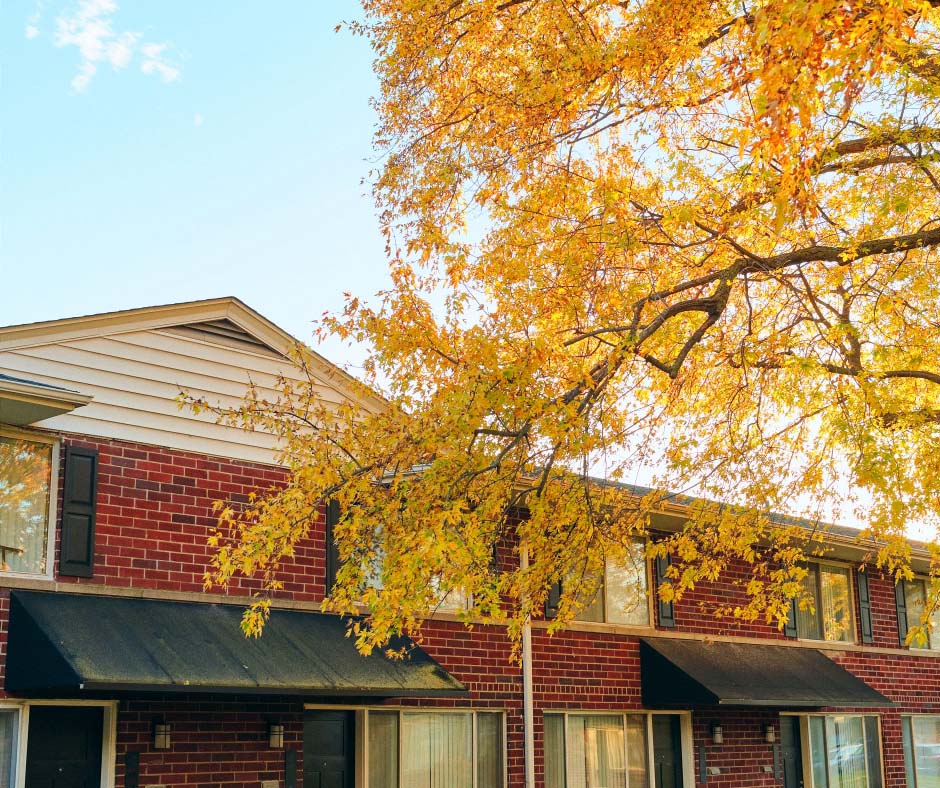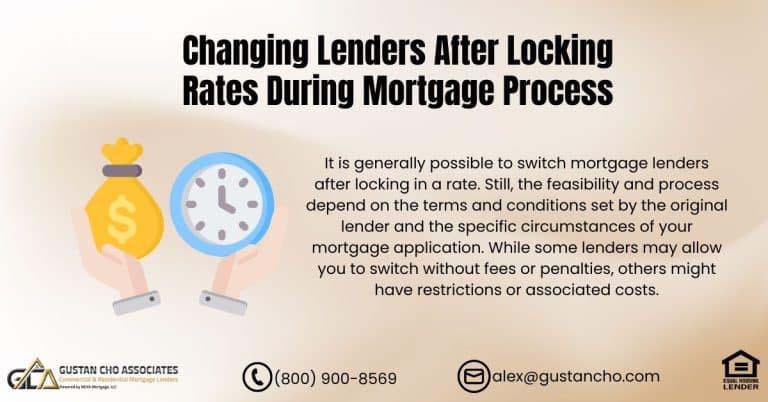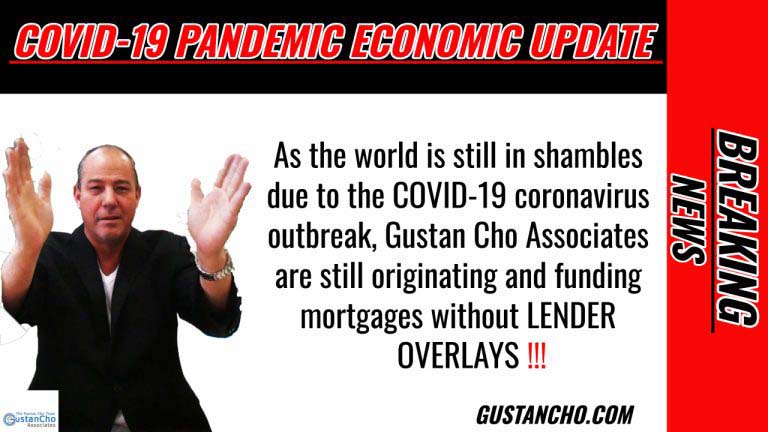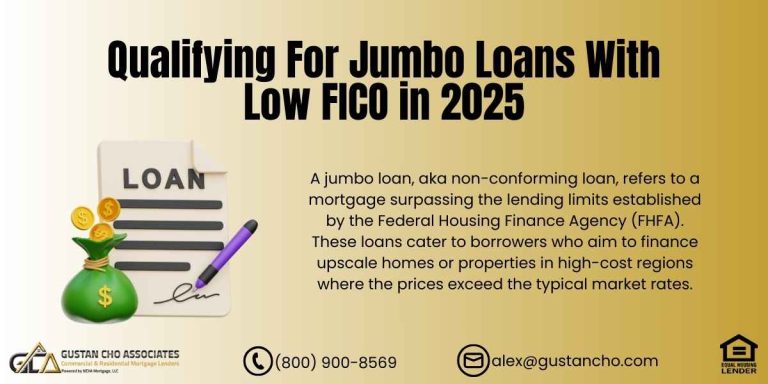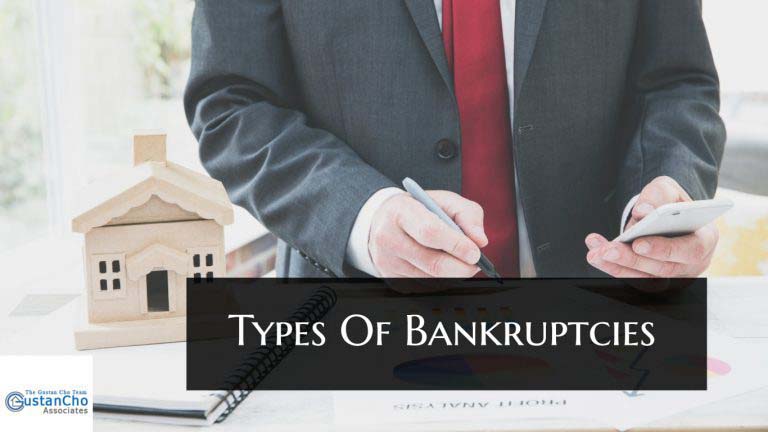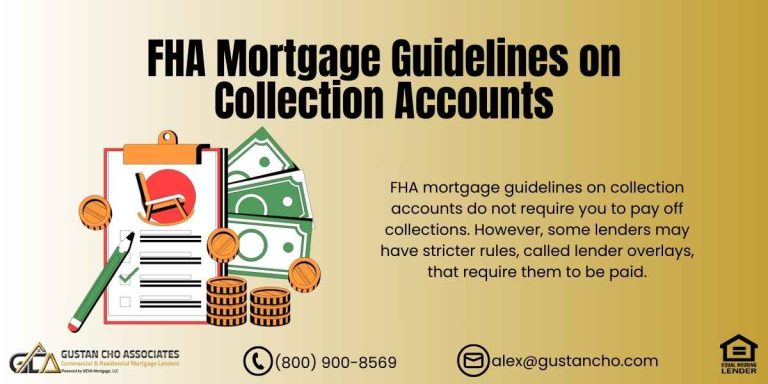Refinancing Non-QM to Conforming Loans in 2025: A Smart Move for Lower Rates
If you have a non-QM loan and you’re wondering if refinancing into a conforming loan is possible, the answer is yes. In fact, many homeowners use non-QM mortgages as a stepping stone and plan on refinancing non-QM to conforming loans once they qualify. Mortgage rates hit the highest since the 2008 Housing Bubble and Credit Collapse. With mortgage rates changing and loan programs becoming more flexible in 2025, now may be the right time to make your move.
In this guide, we’ll walk you through everything you need to know about refinancing non-QM to conforming loans. We’ll explain what non-QM and conforming loans are, why you might want to refinance, what you need to qualify, and how to get started with Gustan Cho Associates.
What Is a Non-QM Loan?
Non-QM (non-qualified mortgage) loans are for borrowers who don’t meet standard loan rules. Maybe your income is hard to document. Maybe your credit score is low. Or maybe you recently had a bankruptcy or foreclosure. Non-QM loans offer more flexible options to help you buy a home when traditional loans aren’t available.
John Strange, a senior loan officer at Gustan Cho Associates, explains about refinancing non-QM to conforming loans:
NON-QM Mortgages is a temporary bridge form of financing for borrowers who cannot qualify for conforming loans to purchase homes in a hot real estate market.
Some common types of non-QM loans include:
- Bank statement loans for self-employed borrowers
- DSCR loans for real estate investors
- Asset depletion loans
- No-income verification loans
Non-QM loans are a great solution, but they often have higher interest rates. That’s why many borrowers look into refinancing non-QM to conforming loans when their financial situation improves.
Refinance Your Non-QM Loan to a Conforming Loan Today
Unlock better rates and more flexible terms by refinancing to a conforming mortgage.
What Is a Conforming Loan?
Conforming loans are basically mortgages that follow the rules set by Fannie Mae and Freddie Mac. They usually come with lower interest rates and better terms, and lenders are more likely to approve them. To obtain a conforming loan, you’ll generally need to demonstrate a stable income, a strong credit score, and a reasonable debt-to-income ratio. Plus, a down payment or some equity in your home is also usually required.
As of 2025, the conforming loan limit in most places is $766,550, and it can be even higher in more expensive areas. If you have a non-QM loan at a high interest rate, refinancing to a conforming loan can help you save a lot of money each month.
Is Refinancing Non-QM to Conforming Loans Possible?
Yes, and it happens all the time.
Many borrowers get non-QM loans because they couldn’t qualify for a conforming loan at the time. Maybe your credit was too low, your income wasn’t stable, or you had a recent housing event like a foreclosure.
After some time, if you’ve worked on your credit, paid down debt, or stabilized your income, you may now qualify for a conventional loan. Refinancing non-QM to conforming loans can help you:
- Lower your monthly payment
- Secure a better interest rate
- Remove risky loan features like interest-only payments
- Build equity faster
- Avoid balloon payments
What Do You Need to Refinance Non-QM to Conforming Loans?
To refinance into a conforming loan, you’ll need to meet some basic qualifications. Here’s what lenders typically look for:
1. Credit Score
Knowing how your credit score affects the process is important when you think about refinancing non-QM to conforming loans. Conforming loans usually require a minimum of 620 credit score. A higher score can help you get better interest rates. If your credit score was low when you got your non-QM loan, now is a good time to work on improving it.
To increase your credit score, pay all your bills on time, reduce your credit card balances, and avoid taking on new debt. By making these changes, you’ll raise your credit score and improve your chances of refinancing into a conforming loan with better terms.
2. Income Documentation
Conforming loans usually require pay stubs, W-2s, and tax returns. If you’re self-employed, you’ll likely need two years of tax returns. If you were approved for a non-QM bank statement loan, now might be the time to switch if your income is documentable.
3. Debt-to-Income Ratio (DTI)
Lenders compare your monthly debts to your gross monthly income. Most conforming loans accept a DTI up to 45%, though exceptions are possible. If your DTI is high, consider paying off some debts first.
1. Equity in the Home
You need some equity to refinance. The ideal loan-to-value (LTV) ratio for conventional loans is 80% or less. That means you should have at least 20% equity. However, it may still be possible with less, depending on the program.
Timing Your Refinance Right
Refinancing non-QM loans to get conforming ones really depends on timing. If mortgage rates have gone down or your financial situation has improved, it might be a good time to move. In 2025, rates have eased up a bit from the highs in 2023, giving borrowers more room to breathe.
If you got your non-QM loan in 2022 or earlier with a rate between 9% and 12%, you might now qualify for a conventional loan at 6.5% or lower, depending on your profile.
Save Big by Refinancing from Non-QM to Conforming
Take advantage of lower interest rates and more favorable terms with a conforming loan.
Benefits of Refinancing Non-QM to Conforming Loans
Here’s why homeowners are choosing to refinance non-QM to conforming loans:
- Lower monthly payments
- Fixed interest rates with long-term stability
- No more balloon or interest-only terms
- Ability to cancel mortgage insurance (PMI) with 20% equity
- Improved loan terms and flexibility
You can choose to skip up to two months of mortgage payments while you refinance. You can also add closing costs to the loan.
Step-by-Step: How to Refinance Non-QM to Conforming Loans
Step 1: Check Your Credit
Get a copy of your credit report and score. If your credit has improved since your non-QM loan, that’s a good sign.
Step 2: Review Your Income
Make sure your income can now be documented using pay stubs, W-2s, or tax returns. If you’re self-employed, prepare at least two years of returns.
Step 3: Estimate Your Equity
Find out your home’s current value and how much you still owe. You’re in a strong position if you have at least 20% equity.
Step 4: Talk to a Lender with No Overlays
At Gustan Cho Associates, we don’t add extra guidelines or overlays. We follow the rules of Fannie Mae and Freddie Mac directly.
Step 5: Apply and Lock Your Rate
Once you’re ready, submit your application and lock in your rate. We’ll walk you through the rest.
Real-Life Example: From Non-QM to Conforming
In 2021, Jasmine took a significant step in her entrepreneurial journey by closing on a non-QM bank statement loan. At the time, she had just launched her business. She could not provide traditional tax returns, making it challenging to secure financing. With a loan rate of 10.25%, Jasmine knew she was facing higher costs, but the opportunity to fund her business was worth it.
This initial loan allowed her to stabilize her business operations during its crucial startup phase.
Fast forward to early 2025, and Jasmine had made remarkable progress. After three solid years of revenue generation, she filed her taxes. She managed to boost her credit score to an impressive 700. Seeing the chance to improve her financial situation, she contacted Gustan Cho Associates to explore refinancing options.
Successfully transitioning to a 30-year fixed conforming loan at a much lower rate of 6.5%, Jasmine experienced a significant reduction in her monthly payments, which dropped by over $400. This shift not only gave her a more predictable financial outlook but also enabled her to build equity in her home at a quicker pace.
Get Started with Gustan Cho Associates
At Gustan Cho Associates, we focus on assisting borrowers with non-QM loans in securing improved financing solutions. We work with homebuyers, self-employed borrowers, and those who have unique financial situations. If you’re ready to start refinancing non-QM to conforming loans, we’re here to help every step of the way.
We’re available 7 days a week, including evenings and holidays. Call us at 800-900-8569 or text us for a faster response. You can also email us at alex@gustancho.com.
Non-QM Loan Rates Too High? Refinance to a Conforming Loan
Lower your monthly payments and save on interest by switching to a conforming loan.
Final Thoughts
Refinancing non-QM loans to conforming loans in 2025 is not just achievable—it can be a wise decision that saves you money and positions you for financial success in the long run. If there have been improvements in your credit, income, or financial circumstances, don’t hesitate. Allow Gustan Cho Associates to assist you in discovering your options today.
Please contact us at 800-900-8569, text us for a faster response, or email us at alex@gustancho.com. The team at Gustan Cho Associates is available 7 days a week, on evenings, weekends, and holidays.
Lower rates. Better terms. More peace of mind. Let’s make it happen together.
Frequently Asked Questions About Refinancing Non-QM to Conforming Loans:
Q: Can I Refinance From a Non-QM Loan Into a Regular Loan?
A: Yes! Refinancing non-QM to conforming loans is possible once your credit, income, or finances improve. Many people start with a non-QM loan and switch later to save money.
Q: Why Should I Consider Refinancing Non-QM to Conforming Loans?
A: Because it can lower your rate and monthly payment. Refinancing non-QM to conforming loans usually means better loan terms, lower interest, and more peace of mind.
Q: How Soon Can I Start Refinancing Non-QM to Conforming Loans?
A: In most cases, you’ll need to wait at least 6 months to 1 year. But if your credit and income qualify, we can check your options anytime.
Q: What Credit Score do I Need to Refinance Into a Conforming Loan?
A: Most conforming loans need at least a 620 score. If your score has increased since you got your non-QM loan, refinancing non-QM to conforming loans might be smart.
Q: What Paperwork do I Need to Refinance My Non-QM Loan?
A: You’ll need to gather some stuff to show how much you earn, like pay stubs or tax returns, credit reports, and details about your home. If you’re refinancing from a non-QM loan to a conforming loan, be prepared for more paperwork than a non-QM loan.
Q: Can I Refinance if I’m Self-Employed?
A: Yes! As long as you can show income through tax returns, you can still look into refinancing non-QM to conforming loans, even if you work for yourself.
Q: How Much Equity do I Need in My Home to Refinance?
A: It helps to have 20% equity, but some conforming loans allow for less. When refinancing non-QM to conforming loans, we’ll review your home value and mortgage balance.
Q: Will I Save Money by Refinancing Non-QM to Conforming Loans?
A: Most likely! Many non-QM loans have higher rates. If you switch to a conforming loan, your monthly payment and interest can go down a lot.
Q: Can I Refinance if I had a Bankruptcy or Foreclosure?
A: Yes. You may qualify once enough time has passed and your credit has improved. We specialize in refinancing non-QM to conforming loans even after major credit events.
Q: Who Can Help Me with Refinancing Non-QM to Conforming Loans?
A: Gustan Cho Associates can! We help people every day move from non-QM to better loans. Call us at 800-900-8569 or email alex@gustancho.com to get started.
This blog about “Refinancing NON-QM To Conforming Loans” was updated on July 14th, 2025.
Refinancing Non-QM to Conforming Loans Can Be Easy
Let us guide you through refinancing for better terms, lower payments, and easier qualifications.


